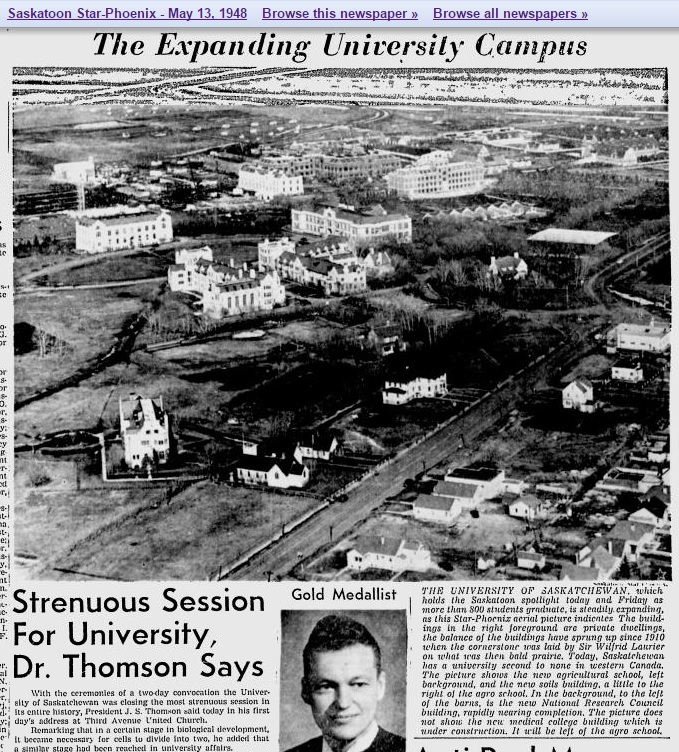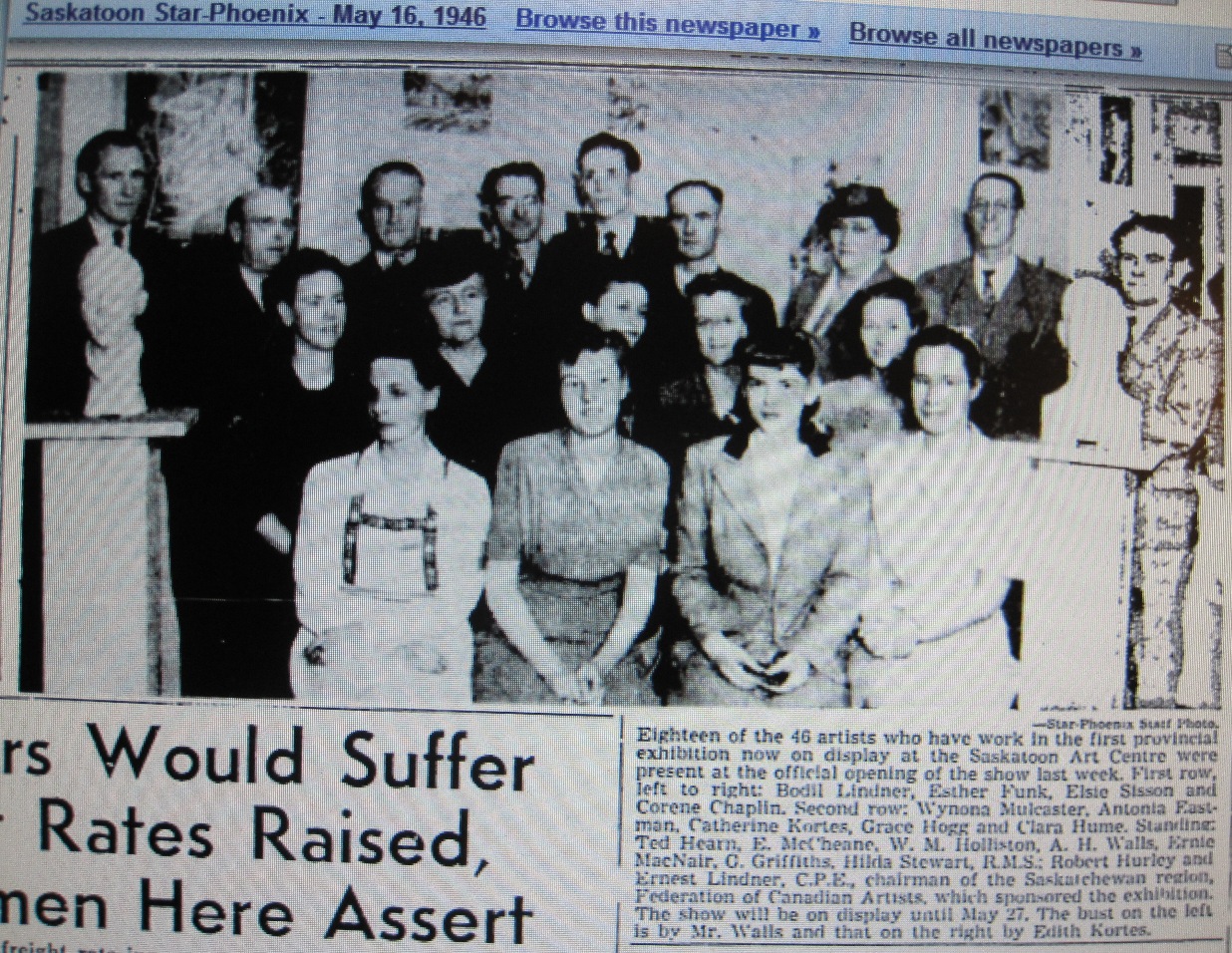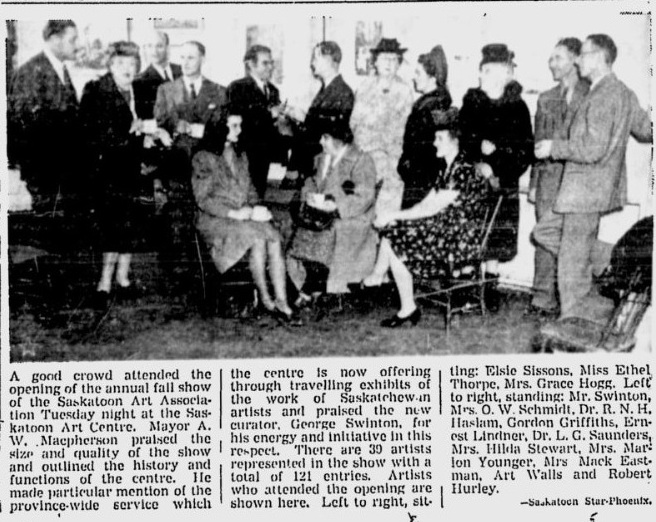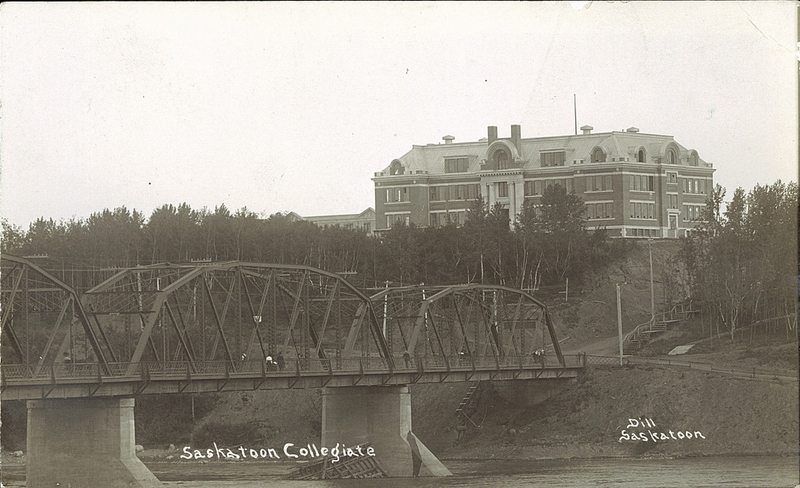What I have been trying to address in my posts on early Saskatchewan art is what I and others term visual culture. Art with a capital A is viewed by many as a limiting description, which excludes many artistic practices. This is especially true when it comes to the practices of indigenous people, who themselves have been stereotyped by the term “Indian.” Without a separate category in their languages which is the equivalent of the English word “art,” it seems more appropriate to use the term visual culture to encompass myriad ritual and material artistic traditions practiced in the prairies by various First Nations groups.
The newspapers I looked at covered the early days of settler culture in Saskatchewan but they also contained a surprising amount of material that could be used for a history of First Nations visual culture in Saskatchewan. Apart from some anthropological and archaeological studies, I am unaware of any art histories of Saskatchewan which go into any detail about the visual culture of indigenous people during this crucial period. Crucial because the era represents a time when the traditional way of life was a living memory for many but the free performance of it was no longer allowed because of signed treaties, reserve confinement and the hegemony of settler culture.
Of course, the newspapers were written for and directed to a settler culture audience so what you find is what you get. Today, no one would think of writing a history of art in Saskatchewan without including the important contribution to it by living artists of indigenous heritage, many of whom make reference to past injustices and traditional motifs in their art. In the period before 1950, no one thought of including indigenous artists in mainstream culture — they were separate and their visual culture belonged to the “past.” It was framed that way for appreciation.
While there is an overriding sentiment in many pre-1950 newspaper articles that Euro-Canadian culture was superior to the indigenous ones, there was clearly an admiration for the visual culture of the plains people prior to the arrival of settlers. One only has to look at the significant amount of imagery created by Euro-Canadians on the subject to see that. That is the topic of another post in this blog, one I feel more qualified to speak to, being a descendant of the settler culture and having studied the image of the” Indian” in settler culture for many years.
However, I am presenting a number of avenues for research in the newspapers that could be followed by students of indigenous art history with the list that follows. I find the prize lists of “Indian handicraft” winners in the annual summer fairs a particularly valuable way to study early 20th century indigenous art because they include names of individual practitioners. Many of the displays mediated by settler culture tropes do not mention names of individual artists and while they are descriptive of the products of indigenous artists, they don’t specify many of the individual producers. Therefore, these prize lists in the Regina newspapers are a goldmine, even though they only use the fair categories created and judged by settler culture to describe the work.
The early fairs often displayed the farm products produced by people living on reserves or going to “Industrial Schools” and listed the names of winners. So at least as far back as 1890 you can find who grew the best potatoes or made the best aprons and where they lived. More interesting are the handicraft displays which feature both European-style crafts and indigenous crafts made by First Nations people. In the 1908 Morning Leader, for example, you can find that Pimotat won the prize for his fire bag at the File Hills fair and that Mrs. J.R. Thomas made the best beaded moccasins and Red Dog won the prize for silk embroidered moccasins.
As well there are frequently commentaries on the gatherings and activities of the groups of indigenous people who often camped at the summer fairs. For the settlers, these encampments provided an “exhibition” of an old prairie life so different from their own. Read the accounts of the Indian exhibits at the 1911 Dominion fair in Regina, both the prize list (scroll right to next page) and the account of the presence of the File Hills band on the premises and a rumination on its presence among the other art exhibits. Once you know when the fairs were held, you can look up the lists year after year in Regina or other ones if you can find them. Here are some lists and articles I retrieved:
Morning Leader: Jul 22, 1916, Jul 28, 1921, Jul 27, 1926, Leader Post Jul 30, 1930, Aug 2, 1930, Jul 27, 1937, Aug 2, 1940,
The Saskatoon Phoenix does not contain much reference to the presence of indigenous people at the fairs until the 1930s. Jul 23, 1936, Jul 28, 1938 are examples. Saskatoon’s fair had begun in the 19th Century but it was a much smaller scale affair until the 1920s and older settlements in the north like North Battleford and Prince Albert were more likely gathering places for indigenous people at fair time. However, I found this 1941 article which states that indigenous people had been a presence at the Saskatoon fair for 60 years.
Sometimes there are actual reviews of the “Indian exhibits” like in July 30, 1930 Regina Leader Post above. The 1933 World’s Grain Exhibition in Regina had a huge handicraft exhibit and attracted a lot of indigenous groups to the fair grounds. Read accounts of the Indian village, the prize lists and editorials on the impression that the indigenous component added to this one and only world fair held in Saskatchewan. Aug 1, 1933 See this prize list and editorial page of the same issue, noted in my post on the 1933 World’s Grain Show.
Another particularly useful avenue for study is the miscellaneous accounts of artifacts being found or collected by individuals and institutions. The provenance of where many anonymous articles now in collections came from is a good thing to know. See: Nov. 21, 1907 Morning Leader for an account of the finding of a large stone near File Hills which had a sun god’s face carved into it. This stone is in the possession of the Royal Saskatchewan Museum and an image of it is available on their website. July 6, 1906 An Interesting Find at Balcarres of a stone pictograph and Aug 16, 1937 RLP another account of a stone idol.
The 1907 story may be related to the stone which was found in Archibald McDonald’s house in Fort Qu’appelle when a Regina reporter came to call in Jul 17,1913 Morning Leader. Perhaps it was even the stone that Edmond Morris planned to use in the Treaty Memorial at Ft. Qu’Appelle. See my post on Western Art Association
Jan. 7, 1915 tells of the beginning of a collection of Indian artifacts at Saskatchewan’s Provincial Museum, Regina. May 19, 1917 annnouncement that the Smith & Vidal collections will be shown at Regina Fair. Sep 15, 1920 announcement of a donation to Museum. Mar. 24, 1928 Mary B. Weekes collection (Mary Weekes was a member of the LCW Arts and Letters Committee who actively collected Indian crafts and also wrote about them, Mar 30, 1928) Aug. 1, 1934 RLP Museum display of early artifacts.
Apr. 16 1934 RLP story in RLP about donations to Provincial Museum. 1935 story in Star Phoenix re: stone implements collected by the University of Saskatchewan shown at the fair. May 15, 1934 RLP story about a furnace used to make arrow heads uncovered by winds of the drought. Apr. 14, 1934 SSP relics uncovered by wind. Jan 6, 1944 SSP collector makes plea for artifact museum.
Then there are the accounts of settler clubs who believed they were encouraging the perpetuation and appreciation of indigenous crafts or helping people to earn money by making them more palatable for a larger audience. See the posts on the Western Art Association, Saskatoon Arts & Crafts Society and the LCW Arts and Letters Committee of Regina who collected older examples of beadwork for historical purposes. While religious groups may deserve the bad rap they’ve been given in some contexts, there is one account of a church woman who seemed to be honestly assisting the people in her district to earn money by perpetuating their traditional crafts. SSP Dec. 7,1940, Nov. 14, 1939 & Nov. 20 same year
There are interesting discussions of indigenous ceremonial activities in the following articles:
Morning Leader Magazine article on Feb 7, 1925 discussing feathers and beads. Lebret pageant 1925 Aug 17, Aug 18 and accompanying photos Aug 11, 13, 14. Apr 5, 1924 (scroll to next page) account of sun dance. July 27, 1931 SSP revival of rain dance. Jul 26, 1939 and Jul 23, 1943 SSP White man made chief. Aug. 16, 1947 SSP Poundmakers tent returned. Feb 4, 1954 RLP recounts how Poundmaker was an early advocate for women’s rights. Oct. 31, 1950 SSP Battleford Indians honour chieftain
I also captured some articles on historical events during the early period and opinion pieces which provide a context and suggest ideas about indigenous people in this time. There will be more on this in my future post on the image of the Indian in Saskatchewan.
Jul 11, 1936 RLP, Piapot Reserve treaty days celebration
May 15, 1926 RLP Indians Progress. Oct. 8, 1928 SSP Indian Day school photos. July 13, 1934 RLP Indians as teachers. Apr. 25, 1935 SSP John Smith Jr. asks for ancient hunting rights
Dec. 24, 1938 SSP Tuberculosis waning. Sep 12, 1934 SSP, Dreaver leads protest Aug. 4, 1938 SSP Death of Dreaver. Aug. 12, 1938 RLP Indian housing
Dec. 15, 1939 SSP Indian opera singer. Feb. 7, 1940 SSP Plight of Indians in Yorkton, Aug. 12, 1938 SSP History of Metis
Jan. 9, 1946 The Place of the Indian editorial in RLP. Sept. 4, 1948 SSP Dundurn Indians immigrants.
Feb. 17, 1951 SSP Historic Massacre of Indians. Jan 15, 1919 Alex Brass wins WWI medal. Oct 5, 1945 RLP Cree woman in CWAC.
Nov 1, 1965 SSP – Profile of Prince Albert Residential School.
Grey Owl, an Englishman inhabiting an ” Indian” identity, got more press than anyone else. Aug 3, 1937 SSP reports on Grey Owl advocating for Indian rights and assessing the state of indigenous art. He was the subject of quite a number of articles when he died. See Apr 13, 1938 SSP and daily April issues following for discussions of Grey Owl’s identity. Another posthumous discussion of Grey Owl can be found in Nov 27, 1939 SSP.
And there are many historical accounts of encounters between ethnic groups written from the perspective of Euro-Canadian witnesses and writers. The Riel Rebellion is the most common event of this kind appearing in many reminiscence type articles. If anyone is interested, you can contact me for a list of articles I’ve collected.
Most of the websites you can find on Saskatchewan indigenous art deal with contemporary artists. Undoubtedly, there were indigenous artists using contemporary European art materials and styles prior to 1950 but they seem to be obscure in the newspapers. The first one I came across was Allen Sapp whose career really belongs to the post 1950 period. See the three websites below for more information on contemporary Saskatchewan indigenous artists.
Saskatchewan Indian Cultural Centre
Aboriginal artists in Saskatchewan at Artists in Canada website
Contemporary Aboriginal Artists at Encylopedia of Saskatchewan
For images of historical cultural objects relating to indigenous people at a variety of archival collections in Saskatchewan see – Our Legacy sponsored by the Saskatchewan Council for Archives and Archivists. Otherwise, the sources for historical Saskatchewan indigenous culture can be found in books on Canadian indigenous art. One of the best discussions I found of this particular period on the plains is in “Tenuous Lines of Descent: Indian Art and Craft of the Reservation Period” by Gerald McMaster, an essay in In the Shadow of the Sun: Perspectives on Contemporary Native Art, Ottawa: Canadian Museum of Civilization, Canadian Ethnology Service, Mercury series Paper 124, 1993. He brings forward the role that the Canadian Handicrafts Guild and the Local Council of Women in Regina played in the popularization of souvenir crafts.
©Lisa G. Henderson






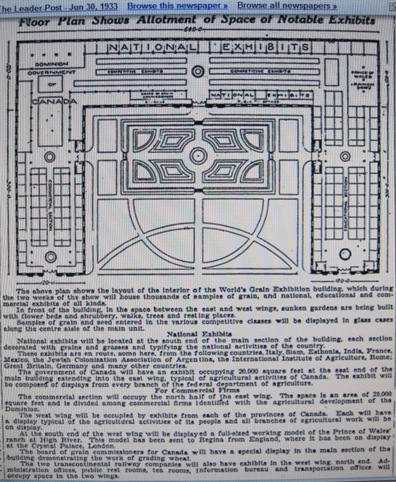



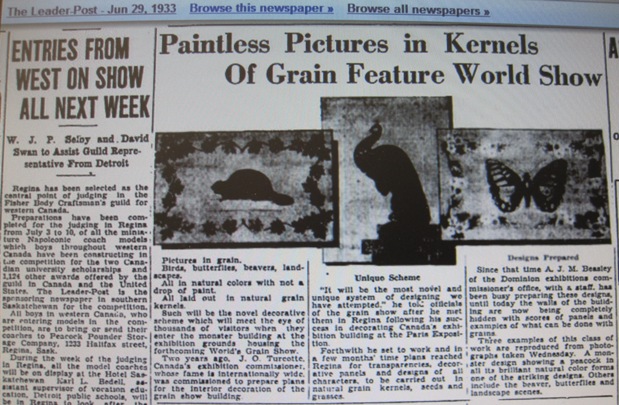

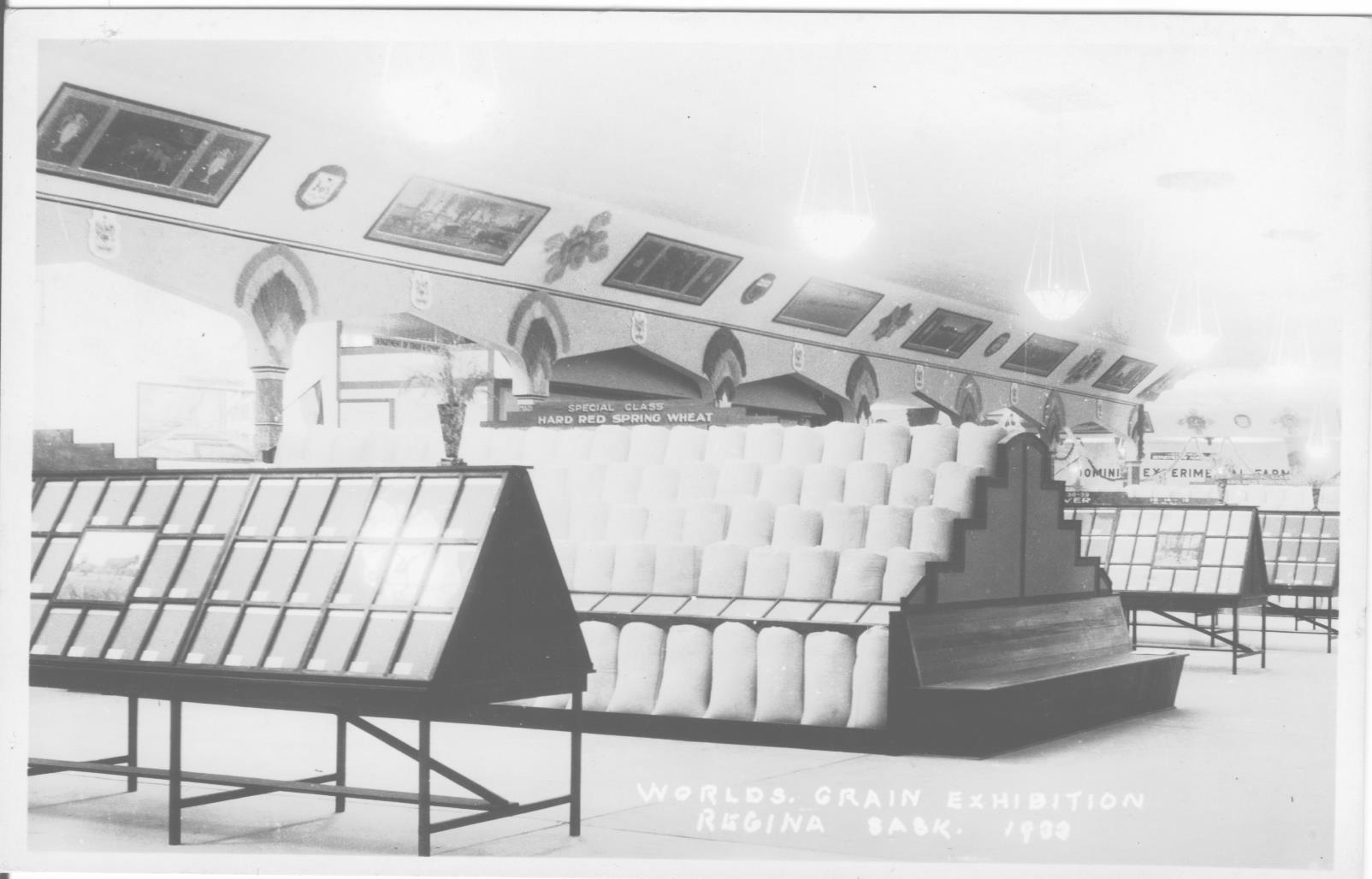
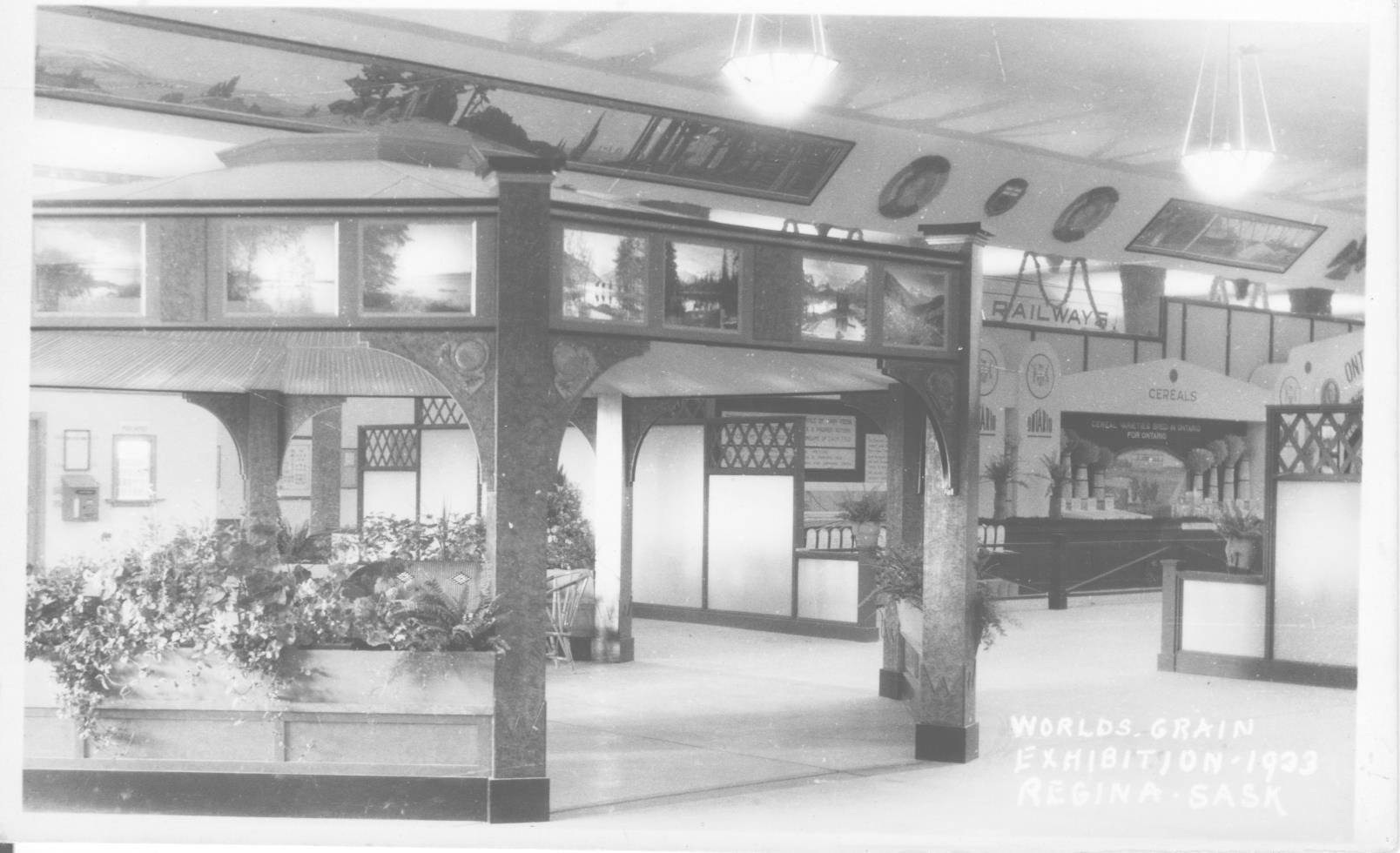
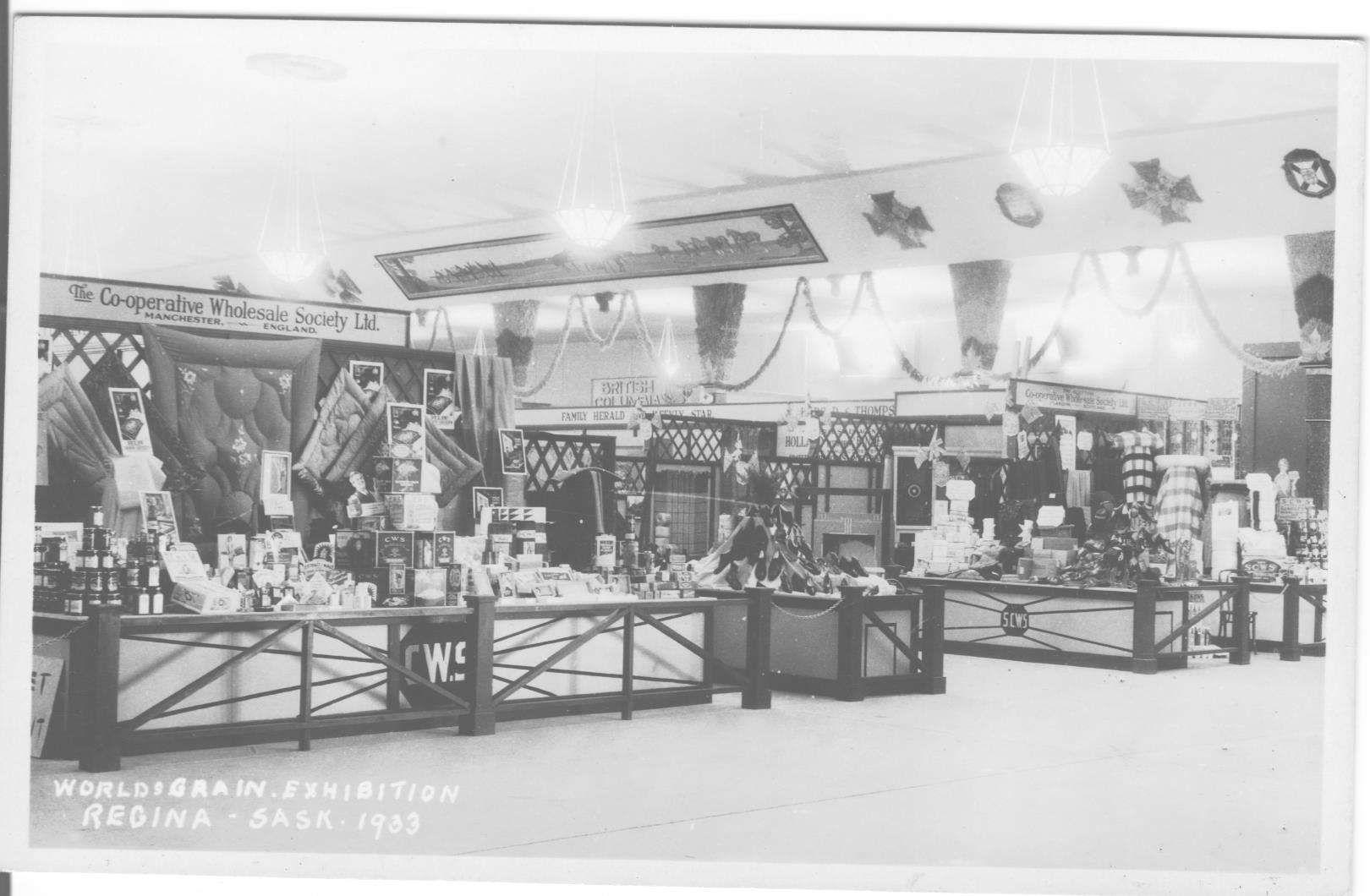

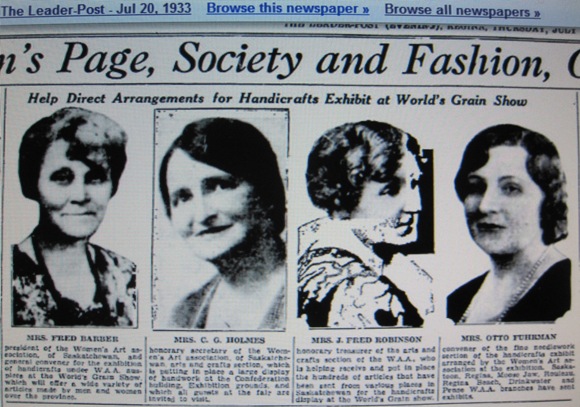

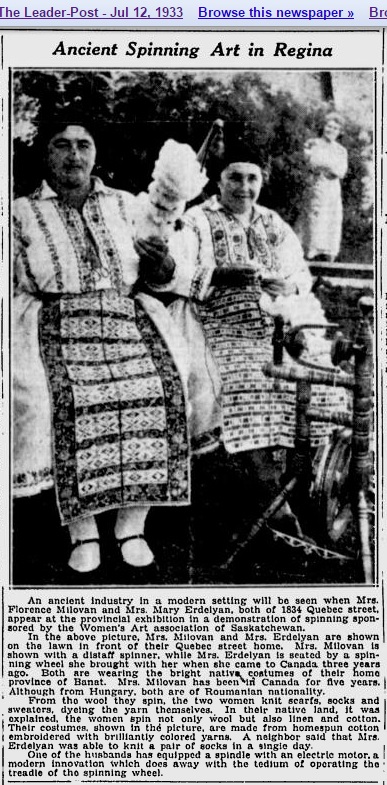


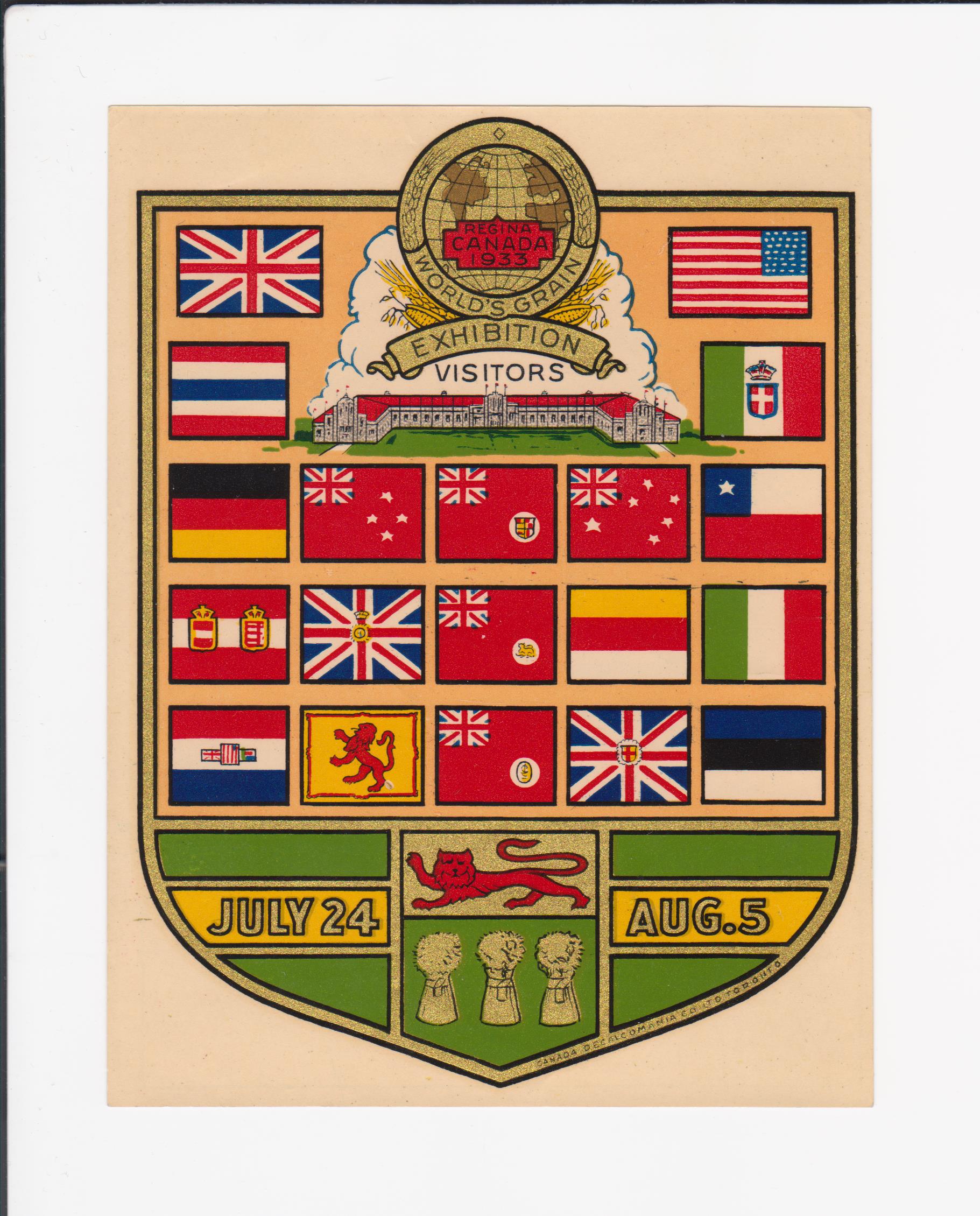
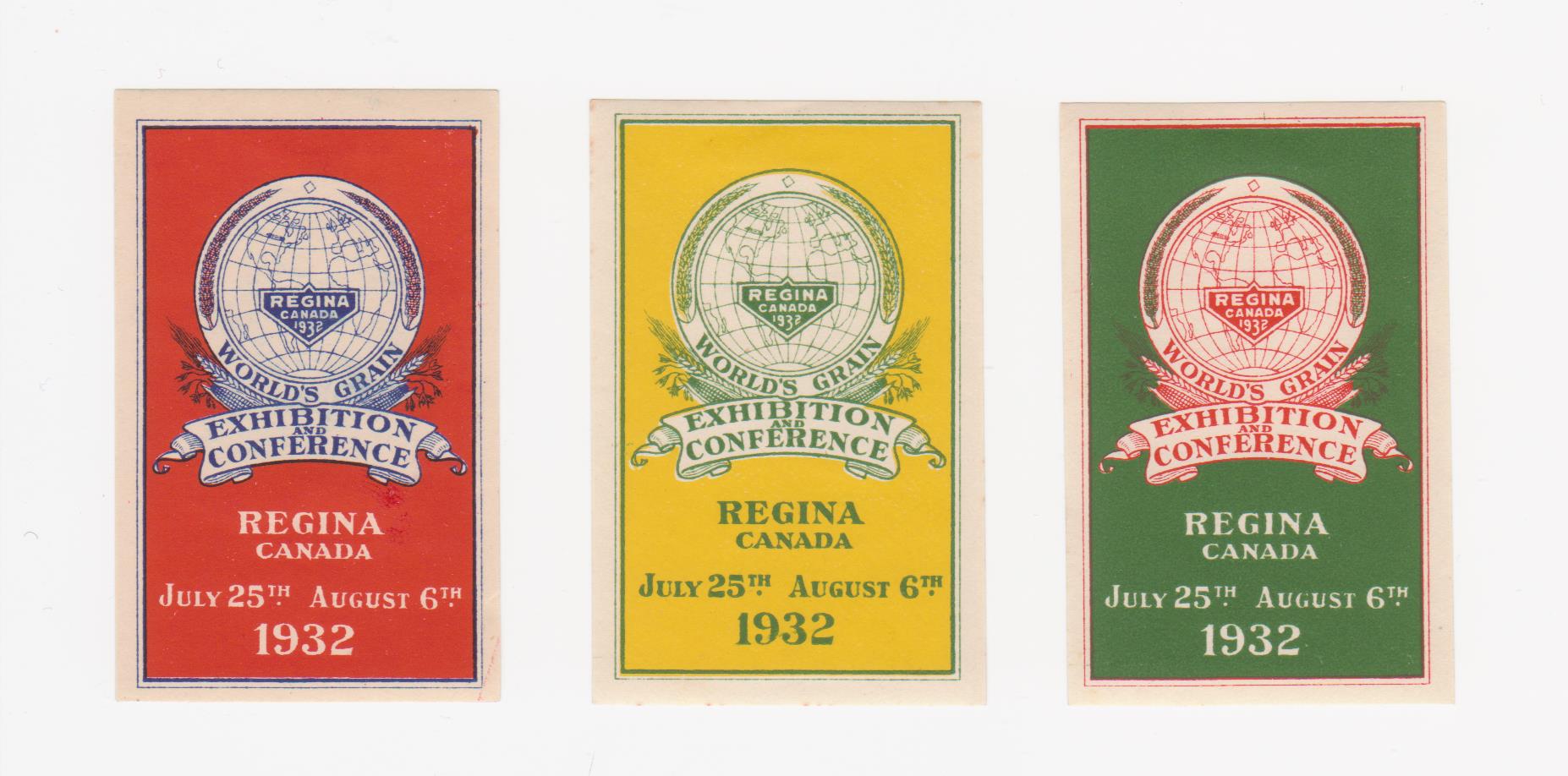
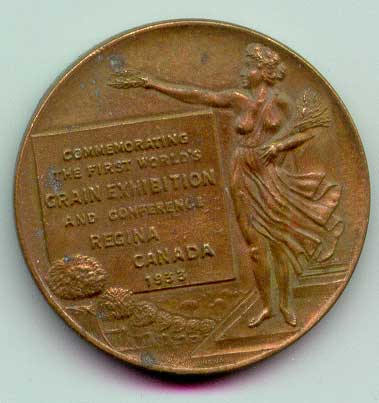

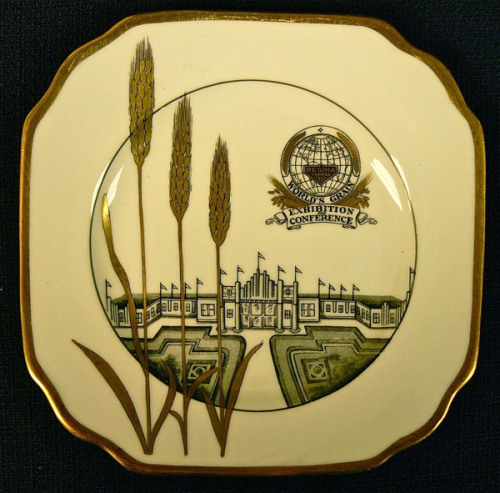
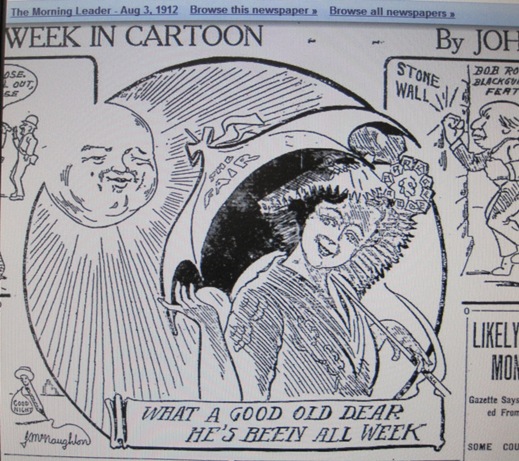
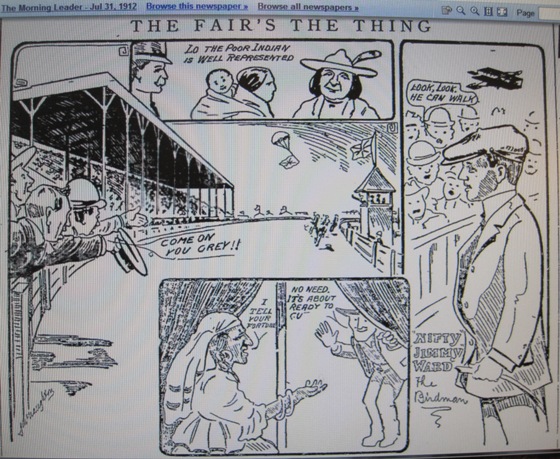




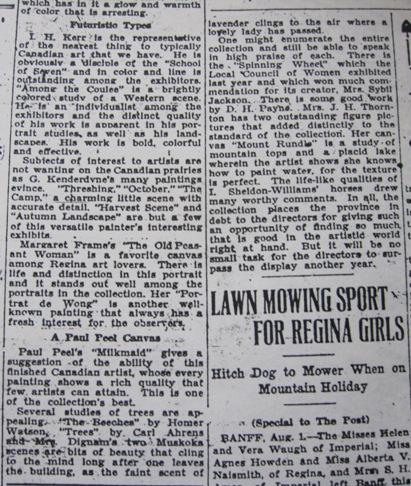


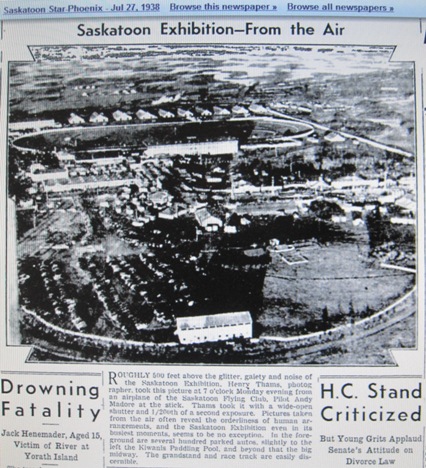




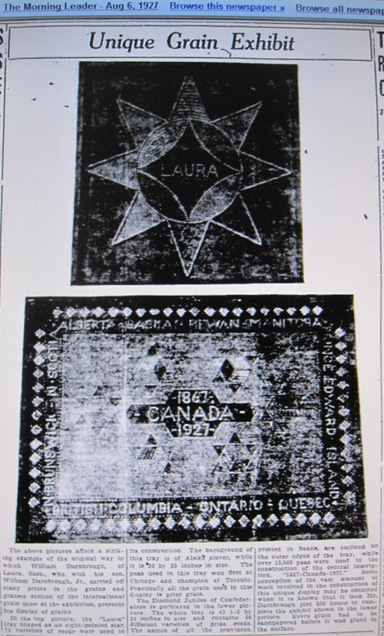

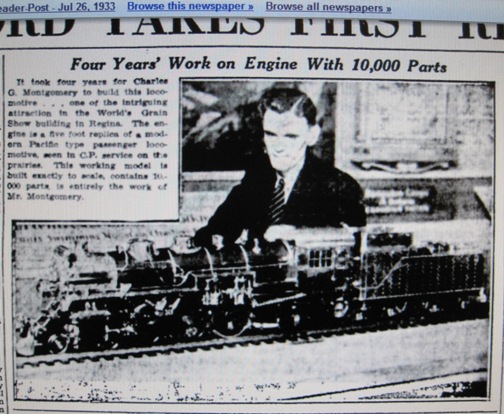


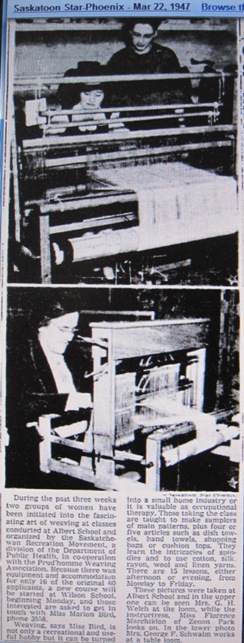

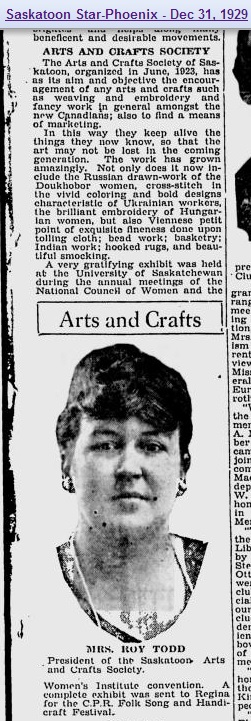






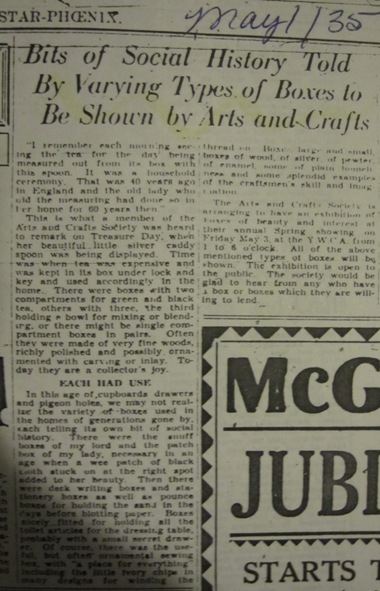

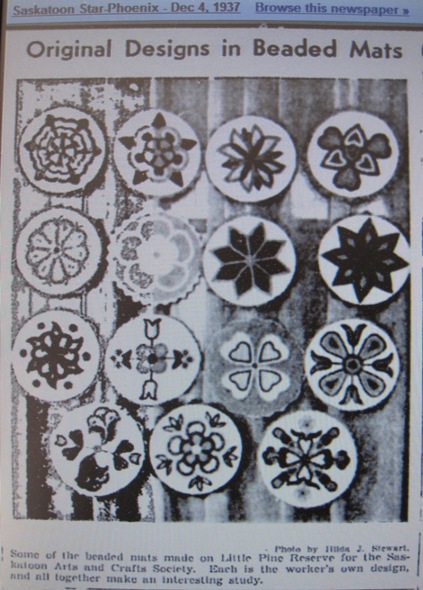


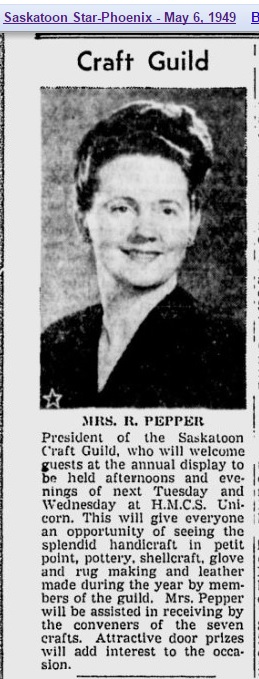
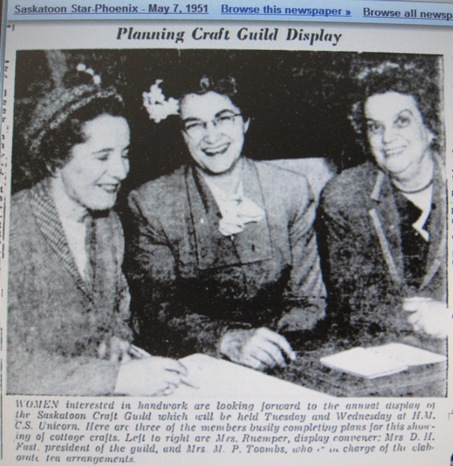





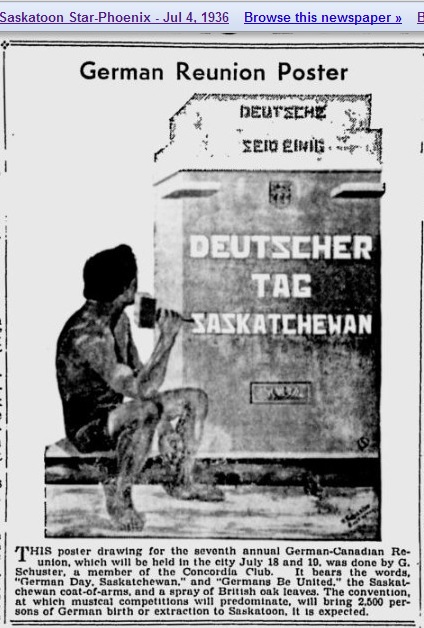

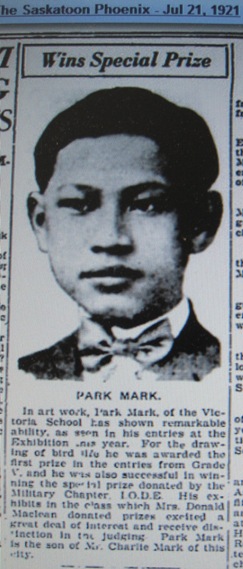 e were what was known as industrial schools or manual training sections which taught practical vocations. The work of students in the industrial schools and the public schools was usually showcased in the annual summer fairs where you can find lists of prizewinners and sometimes reviews of the showings.
e were what was known as industrial schools or manual training sections which taught practical vocations. The work of students in the industrial schools and the public schools was usually showcased in the annual summer fairs where you can find lists of prizewinners and sometimes reviews of the showings. 




